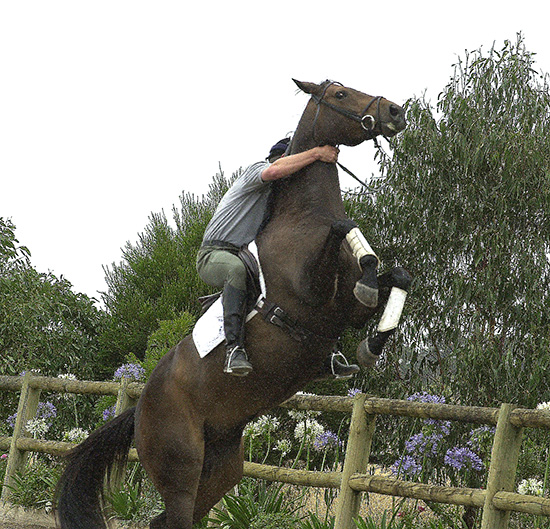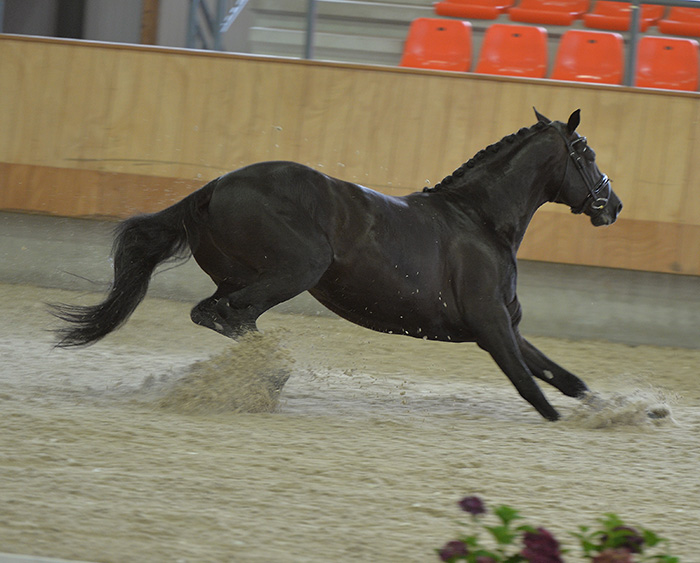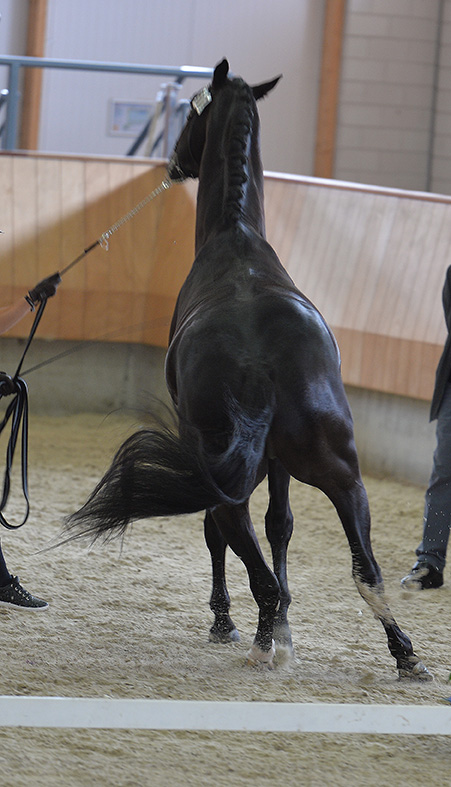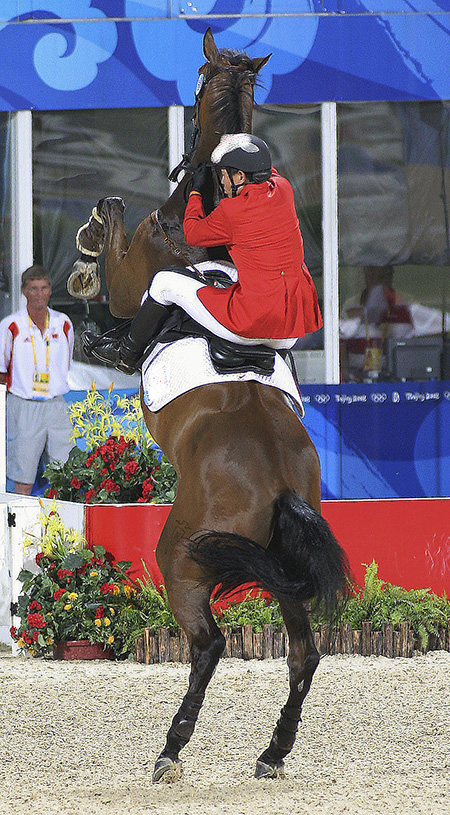Fear is quickly learned, not easily forgotten and is strongly associated with the movement of the horse’s legs. It is important to learn to identify the range of fear responses in horses and to avoid and diminish them.
What is fear?
The fear response is the horse trainer’s greatest adversary. Fear in animals such as horses expresses itself as the flight response – the horse’s attempt to flee from threatening situations. Fear is the activation of the flight response. The flight response involves the animal’s entire body. Behavioural scientists describe all levels of fear as the HPA axis (the hypothalamic-pituitary-adrenal axis). This unwieldy name suggests the origin of the flight response – the brain and the adrenal glands. A structure deep inside the brain called the amygdala, sorts out stimuli as to whether they are fearful or not. Fearful stimuli receive special recognition by the brain in terms of remembering – unlike other information, once learned fearful responses are not forgotten. You can layer new responses on top, so they become less easily retrieved, but forever after, fearful responses need careful training to keep the lid on them.
Once the brain has perceived a fearful stimulus, alertness is raised and the adrenal glands give the heart a kick start. Other, less important stimuli are ignored. That’s why a horse in a full blown flight response can gallop into fences, cars and can collide with trees and other obstacles. Even if the horse manages to jump a fence, its jumping response is diminished to the extent that its legs drag over the wires, perhaps taking out the top couple of wires. A flat hollow jump characterises the flight response and is not uncommonly seen in not so well trained eventing horses in cross-country.
The greater the amount of flight response, the more it is inclined to accelerate and the more it is tuned out to almost everything else, including the aids.
The flight response is extremely variable. It’s like a dimmer switch on a light – it can be fully on or partly on. The flight response shows up in various behavioural ways too. For example, bolting, bucking, rearing, shying, tension, running, hurrying, jogging, rushing, hollow back, high ‘upside down’ head carriage, teeth grinding, tail swishing, tail clamping. In all of the above responses, the legs lose their smooth rhythm and become quick and jerky.
Bolting is the strongest expression of the flight response. It is a defence mechanism allowing the horse to run away from threatening situations. Few animals on earth are as fleet as the horse, especially over a longer distance. Bucking is also a defence mechanism. It is a movement evolved to remove predators from the horse’s back.
Rearing is an aggressive/defensive move that is not only about predator removal but also part of stallion to stallion rivalry. Shying is a small component of the bolting reaction where a sudden swerve assists in avoiding capture. Bucking, bolting and shying are reinforced (rewarded and thus repeated) by the loss of grip of the predator. Under saddle and in hand if the rider or handler loses contact during these hard-to-control manoeuvres, they are similarly rewarded through loss of contact.
Andrew McLean, PhD
Dr Andrew McLean, PhD (Equine Cognition & Learning), BSc (Zoology), Dip Ed
Co-Director, Equitation Science International
Read more from Dr McLean;





